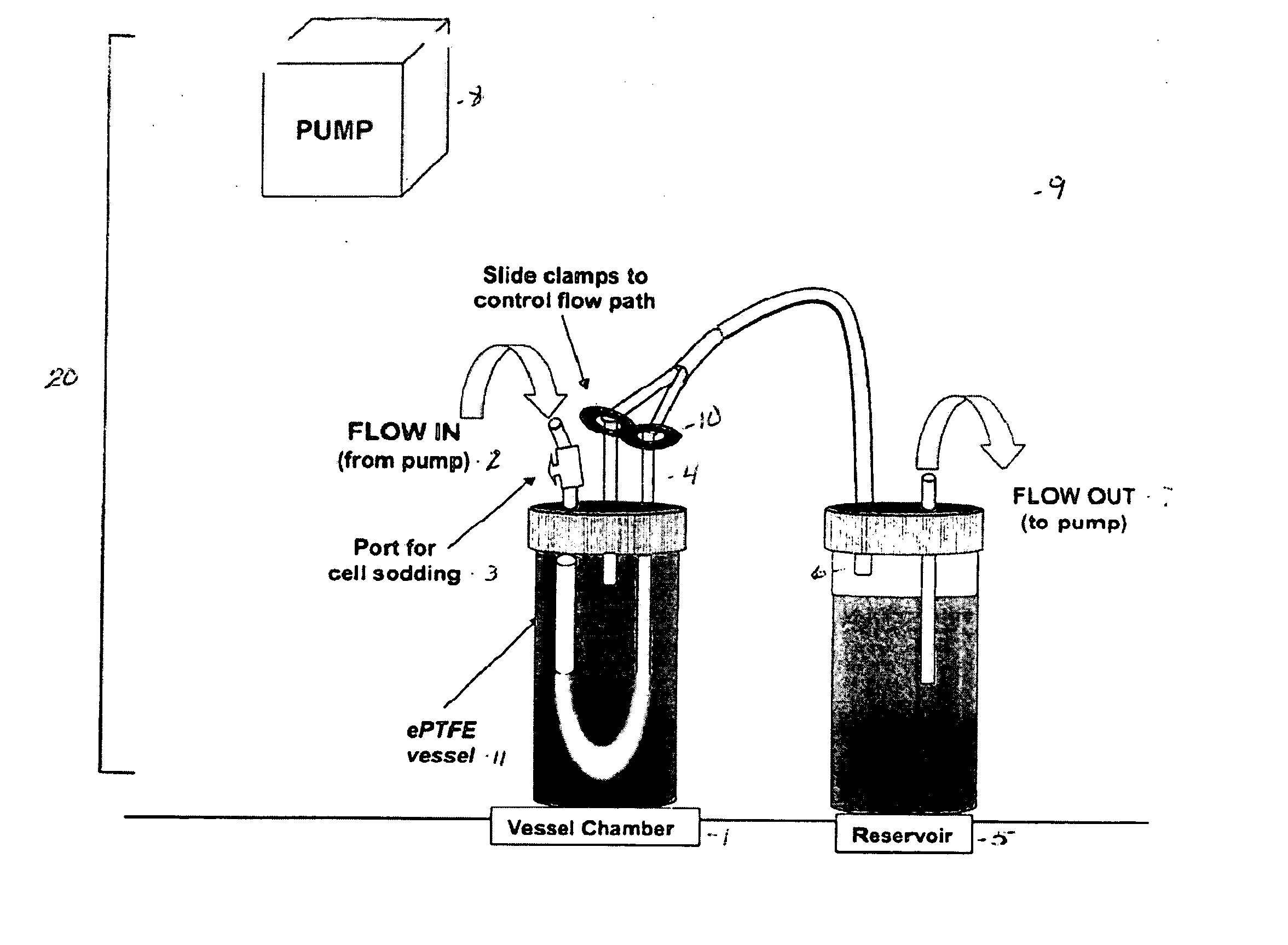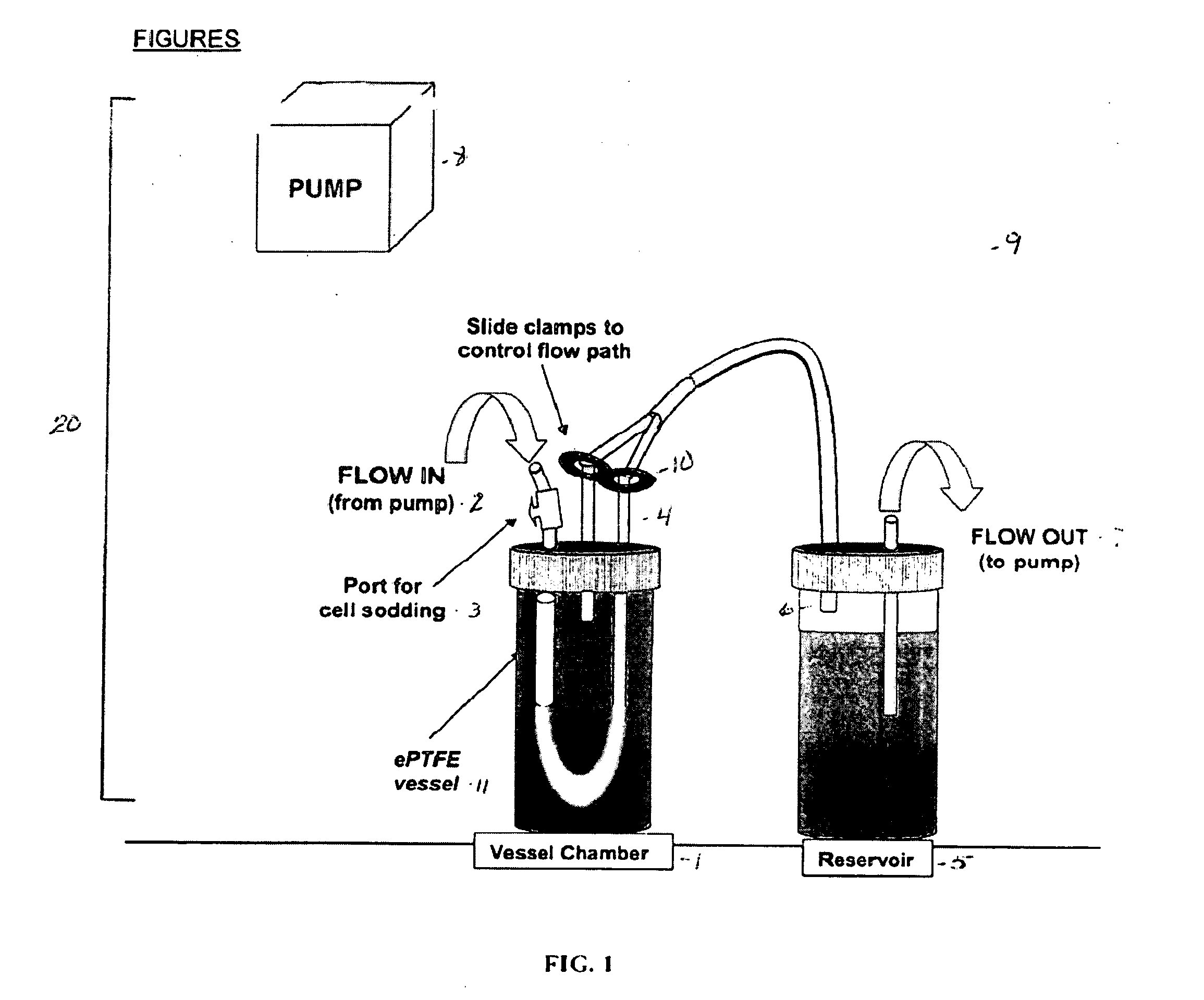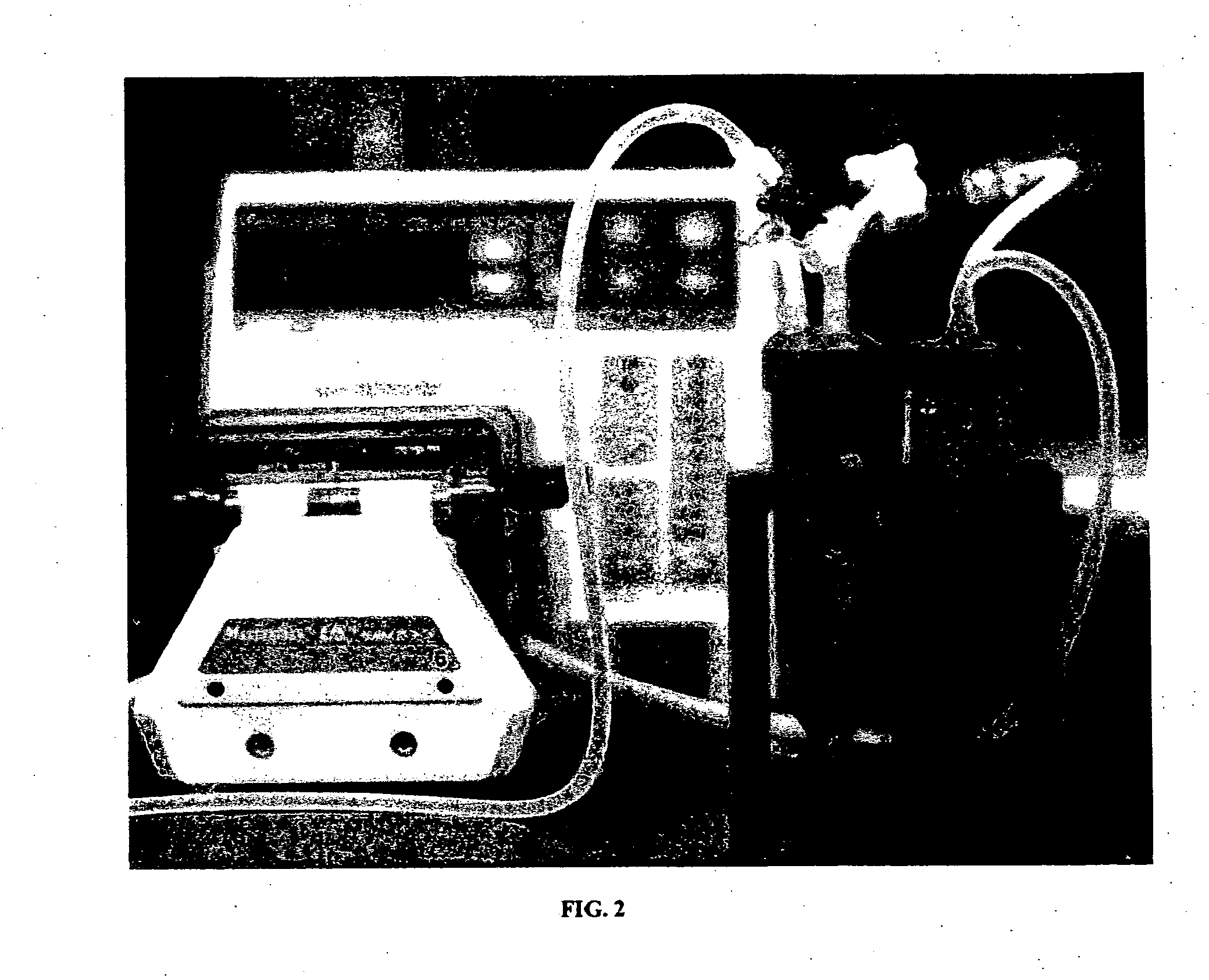Vascular mimic for drug and device evaluation
a technology of mimicry and drug, applied in the field of tissue engineered vascular grafts, can solve the problems of no other available research or other problems
- Summary
- Abstract
- Description
- Claims
- Application Information
AI Technical Summary
Benefits of technology
Problems solved by technology
Method used
Image
Examples
example 1
[0071] Materials and Methods
[0072] Stent surface modifications were evaluated in an in vitro blood vessel mimic model system. BVMs were created by pressure-sodding human microvessel endothelial cells onto the lumen of serum-conditioned 3 mm I.D. expanded polytetrafluoroethylene vascular grafts (C.R. Bard, Inc). Following cell sodding, BVMs were cultivated under flow in an in vitro environment in order to establish the cellular lining. After 1 week, stents were deployed into the BVM systems (see FIG. 4) via a catheter and introducer port.
[0073] Following deployment of the stents, flow was continued for 1 week, at which point stented vessels were taken out of the system and fixed in 10% formalin. Vessels were cut longitudinally into three sections. Stent surface analysis was performed using scanning electron microscopy (SEM) to assess cell coverage and cell morphology. In addition, bisbenzimide (BBI) staining of cell nuclei provided information regarding endothelialization of the de...
example 2
[0077] Materials and Methods
[0078] Expanded polytetrafluoroethylene (ePTFE) of 3 mm and 4 mm inner diameter was cut into 4.5 cm lengths, steam sterilized, and denucleated. ePTFE grafts were conditioned with proteins by capping the grafts and forcing a serum dilution through the pores for 1 hour.
[0079] Conditioned grafts were placed in a bioreactor system, as shown in FIG. 2, and pressure-sodded with human microvessel endothelial cells (HMVECs), isolated from human liposuction fat. Transmural pressure was maintained for 1 hour to facilitate cell deposition.
[0080] Bioreactors were placed in a 37° C. incubator, and media was circulated luminally through each system at 15 mL / min for 10 days to allow for the establishment of a cellular lining. Developments of a cellular lining was verified with scanning electron microscopy (SEM) and hematoxytin and eosin (H&E) staining.
[0081] After 10 days of BVM development, flow was temporarily stopped to allow for stent deployment. Bare metal sten...
example 3
[0089] Materials and Methods
[0090] The in vitro bioreactor system was developed with two chambers placed in series with tubing, and flow established with a Watson-Marlow peristaltic pump. The pump allowed flow regulation through the graft at rates ranging from 4-200 mL / min. The system permitted pressure-sodding of cells, stent deployment, and solute injection to take place internally to maintain sterility. 4 cm lengths of 3 mm I.D. expanded polytetrafluoroethylene (ePTFE, C.R. Bard, Inc.) vascular grafts were denucleated, treated with bovine serum, and inserted into the bioreactor.
[0091] Once each graft / bioreactor system was prepared, endothelial cells were freshly isolated through collagenase digestion of rat epididymal fat pads, and the cells were immediately pressure-sodded onto the grafts. Williams S K, Rose D G, Jarrell B E. Microvascular Endothelial Cell Sodding of ePTFE vascular grafts. Frontiers in Bioscience 2004; 9:1412-1421. Flow was increased to 6 mL / min and the constr...
PUM
| Property | Measurement | Unit |
|---|---|---|
| pressure | aaaaa | aaaaa |
| pressure | aaaaa | aaaaa |
| pressure | aaaaa | aaaaa |
Abstract
Description
Claims
Application Information
 Login to View More
Login to View More - R&D
- Intellectual Property
- Life Sciences
- Materials
- Tech Scout
- Unparalleled Data Quality
- Higher Quality Content
- 60% Fewer Hallucinations
Browse by: Latest US Patents, China's latest patents, Technical Efficacy Thesaurus, Application Domain, Technology Topic, Popular Technical Reports.
© 2025 PatSnap. All rights reserved.Legal|Privacy policy|Modern Slavery Act Transparency Statement|Sitemap|About US| Contact US: help@patsnap.com



